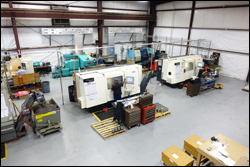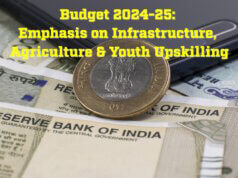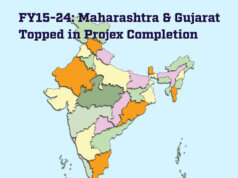
Chairman and CEO,
Aequs
The great India philosopher, Chanakya, once said, “Arthasampat Prakratisampada karoti,” meaning that the economic prosperity of the state creates prosperity for the people. India, a country which can proudly boast about its diverse culture and rich heritage, sadly is not in a situation to boast about its current economy which is the most vital pillar for prosperity. India’s growth has been slow and steady but is still far from reaching its milestone growth.
Advanced estimates released by the Central Statistical Office puts India’s overall GDP growth in 2013-14 at 4.9 per cent, marginally above 4.5 per cent in 2012-13, and for FY 2014-15, the government has projected GDP growth of around 5.0 per cent; all these figures are at a much lower level than what was predicted in 2004.
The economy is trying its best to revive but is faced by quite a few pressing challenges. Poverty and unemployment are still the hot topics of discussion amongst masses and the statement that the rich become richer and poor becomes poorer still prevails due to the rural-urban divide. On top of all these woes, inflation has been taking a toll on the economy for quite sometime now. However, a measure towards sustained and planned economic reforms can tackle these challenges to an extent.
Fiscal discipline must be maintained along with orienting public expenditure towards sectors that are faring badly. Labour laws must be reformed to generate more employment opportunities for the burgeoning population.
Amid the turmoil of the Indian economy, one sector that is showing a lackluster performance is the manufacturing sector.
Former Finance Minister P. Chidambaram, in his interim budget speech, aptly summed up the current scenario by saying, “Manufacturing is the Achilles heel of the Indian economy.” Although the manufacturing sector had expanded by an average annual rate of over 8 per cent for the last 10 years, manufacturing output is seen declining 0.2 per cent in 2013-14 compared with 1.1 per cent growth the previous year, dragging down the overall economy. It is likely to be the worst year for manufacturing since 1999-2000. High interest rates, lack of domestic demand for manufactured goods, high fuel prices and pressure for increased wages are some of the key reasons for the slug that has set in.
Also, regulatory pressures, decreasing profitability of the industry, high prices of raw materials, foreign exchange volatility and increasing foreign competitors are discouraging domestic players.
But the benefits of a strong manufacturing sector to the overall economy are many. It is well known that of the three sectors in the economy, manufacturing is the backbone. This sector can create a huge number of jobs required in the coming years, build India’s presence in the export market, help keep inflation under check and drive economic growth as a whole.
UPA-1 brought in the SEZ law to accelerate manufacturing exports in the country with the high hope of achieving the intended growth. The SEZ law turned out to be more leveraged by the services industry to get the extension on tax holiday than the intended growth of manufacturing exports. This made UPA-II turn back and remove almost all the fiscal tax benefits that were given in the law. By flip-flopping through their own policies, the whole SEZ concept lost the credibility among foreign investors and turned out to be a real estate play focused on IT SEZ in and around the metros rather than on developing rural areas for manufacturing.
SEZ in aerospace cannot be just an industrial park where each of the businesses carry out their own activities independent of other businesses, but has to be a part of the cohesive solution which can coexist and add value to each other and at the same time create a supply chain cluster to increase competitiveness in the business through innovation and through sharing of best practices to develop industry as a whole.
 Instead of fixing what existed and was driven by the private sector, the government brought out yet another policy, National Manufacturing Policy in 2011, targeting 12-14 per cent growth rate and generating nearly 100 million new jobs by 2022. Under this policy, National Investment and Manufacturing Zones (NIMZ) are expected to be set up by the government. Twelve NIMZ, which will offer world-class infrastructure, excellent supporting systems and rapid port connectivity, have been approved but will take another five years to come into existence. Why would we want the government developing and running the industrial estates when there are able entrepreneurs in the country to carry out this activity?
Instead of fixing what existed and was driven by the private sector, the government brought out yet another policy, National Manufacturing Policy in 2011, targeting 12-14 per cent growth rate and generating nearly 100 million new jobs by 2022. Under this policy, National Investment and Manufacturing Zones (NIMZ) are expected to be set up by the government. Twelve NIMZ, which will offer world-class infrastructure, excellent supporting systems and rapid port connectivity, have been approved but will take another five years to come into existence. Why would we want the government developing and running the industrial estates when there are able entrepreneurs in the country to carry out this activity?
We need flexible labour policies to remove the limits on overtime and contract worker rules for longer term usage.
Since aerospace manufacturing businesses import 100 per cent machinery, tools, consumables and material, with only labour as the domestic input, a long-term economic policy that would deliver a foreign exchange policy would be necessary to be globally competitive in aerospace.
The biggest challenge for the aerospace industry is the nascent skill sets among the existing labour force to grow faster. Any incentives to train the labour force to be useful on day one of the job can accelerate the growth of the industry.
A strategic decision by the government to engage with an aerospace OEM to establish a final assembly line and drive to develop a conducive sub-tier ecosystem would go great lengths to make India a significant player on the global aerospace manufacturing map apart from being a market.
Former Finance Minister P. Chidambaram had also proposed reducing the excise duty for the automobile industry as well as restructuring it for mobile handsets to encourage domestic production.
In all this scenario of stagnancy in the manufacturing sector, parts of it are on a growth curve, though. Precision engineering as an industry has seen good response throughout the decade and is poised to maintain a growth figure. Oil and gas, automobiles, and aerospace and defence have seen stable growth and may be the drivers of growth for the economy in the near future.
The expectations from the newly-formed government are many and the Indian industry is hoping for focused efforts by the new government to revive the battered manufacturing sector. Bold decisions are expected to be taken regarding labour reforms which will benefit the Indian workforce. Significant improvement in the quality of governance is anticipated which in turn will reduce transaction cost of Indian exporters and make them competitive. A further possibility of growth for manufacturing is to tap the overseas market and increasing manufacturing capability in goods which are currently imported. Ultimately, it is innovation, quality, standards and R&D that can catapult the manufacturing sector.
India is bestowed with abundant natural resources, a young workforce, huge domestic markets and proximity to promising global markets. Thus, it all boils down to the next big step taken to reform this sector that will decide the near future growth of this segment and hopefully bring smiles to the economy.











